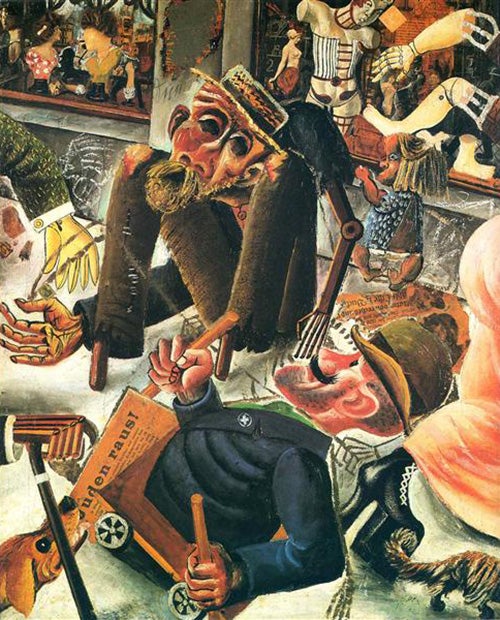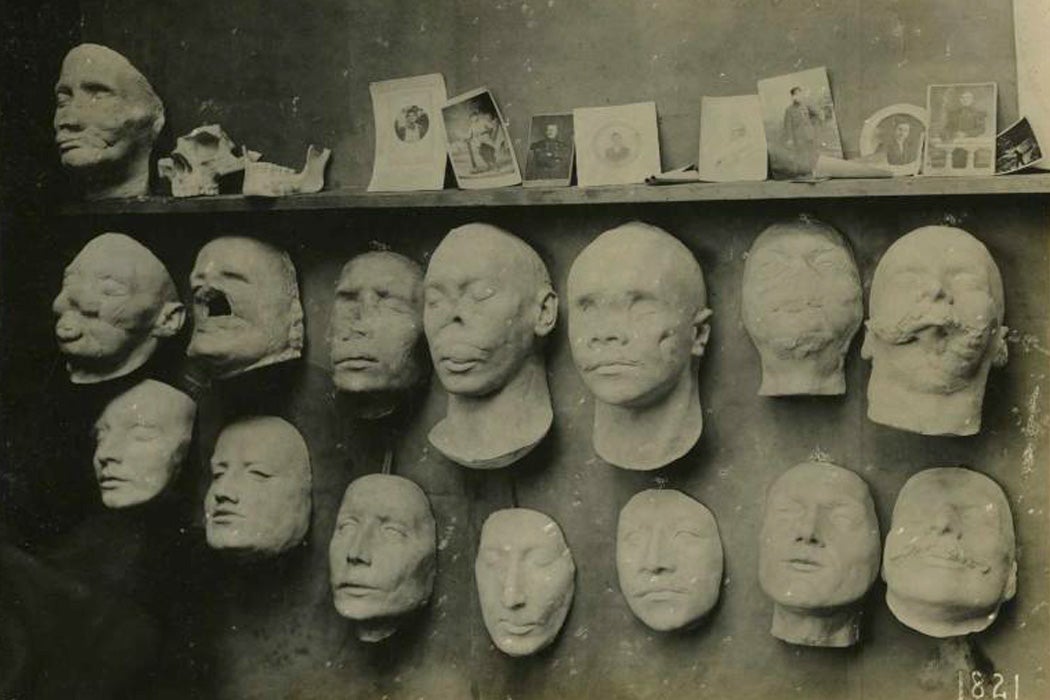Long after Armistice was declared, and grass regrew over trenches and craters, the horrors of World War I were visible on the faces of soldiers. New weapons like machine guns and bomb shrapnel, combined with improved medical care, meant people with major injuries survived—in visibly scarred ways. Looking up from a trench, or out from under a steel helmet, exposed soft features of faces. Noses, jaws, eyes, and cheeks were lost.
Design historian Katherine Feo writes the Journal of Design History:
Facial prostheses were not a new phenomenon in 1918—they had been used for centuries to aid the injured and syphilitic—but they had never before been produced en masse as a systematic remedy for war rehabilitation, and certainly never as a direct design response to the type of violence and injury that characterized the First World War.
Plastic surgery was not yet systematically taught, as medicine had not caught up to the advances of war. To rehabilitate soldiers who had been disfigured, professional artists ran mask workshops between 1918 and 1919. Derwent Wood, who worked as a sculptor before his military service, oversaw the Masks for Facial Disfigurement Department (nicknamed the “Tin Noses Shop”) at the Third London General Hospital. Based on prewar photographs, and some artistic inspiration, his team molded copper recreations of the soldiers’ faces.
In Paris, American sculptor Anna Coleman Ladd led the American Red Cross Studio for Portrait Masks for Mutilated Soldiers, creating hand-painted copper masks, likewise modeled on prewar photographs. A video from her studio shows a man in a medal-adorned uniform jauntily smoking through a false jaw, discretely hooked over his ears. Another man has a false nose and eye, held in place by a pair of disguising spectacles. For a moment, there is a miracle as they are reassembled to prewar selves. But there is no ignoring the uncanny, static state of these metal replacements.

The sight of all these disfigured men—called the “gueules cassées,” or “broken faces,” in France—as well as the masks that hid them, had a significant influence on culture. They were employed as a pacifist tool. Ernst Friedrich’s 1924 book War Against War contrasted photographs of mangled soldiers and patriotic captions. The 1938 French antiwar film J’accuse! cast actual “gueules cassées” as an army of the dead resurrected to remind the living of their losses on the cusp of World War II.
Art historian Elizabeth Lee notes that American painter Ivan Albright’s visceral treatment of the body in his work was influenced by the wounds he observed as a wartime medical draftsman. “While Albright supported the effort of turning maimed soldiers into ‘normal men again’ with his surgical sketchbooks, the paintings he made a decade later run counter to wartime narratives of restoration insofar as they revel in the body’s pathology, its inability to be healed or remade,” Lee writes.
Get Our Newsletter
Similarly, German artist Otto Dix, who had served in a heavy machine gun battery, filled his paintings with the injuries of war. In his 1920 painting “Prager Strasse,” a war veteran is contorted in front of a shop window, where prosthetic limbs and corsets are on display.

“We don’t know what became of the masked men over the course of their lifetimes,” states art historian David M. Lubin in Archives of American Art Journal. “It is easy to imagine, though, that their galvanized copper faces, painted eyes, and frozen expression elicited, in their own way, as much despair from loved ones and revulsion from strangers as the ravaged flesh they were meant to hide.”
Even the horror films of the 1920s often relied on the shock of facial deformity. In the 1925 The Phantom of the Opera, the mask pulled from Lon Chaney’s distorted features is not unlike those made by Ladd and Wood, with its painted eyes and wrinkle-free skin. Although the goal of the prosthetics was to return the soldiers’ dignity, and to ease their transition into civilian life, the message of a mask is always the same: to conceal.







